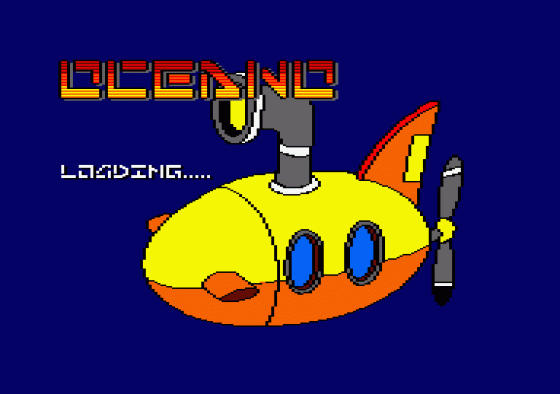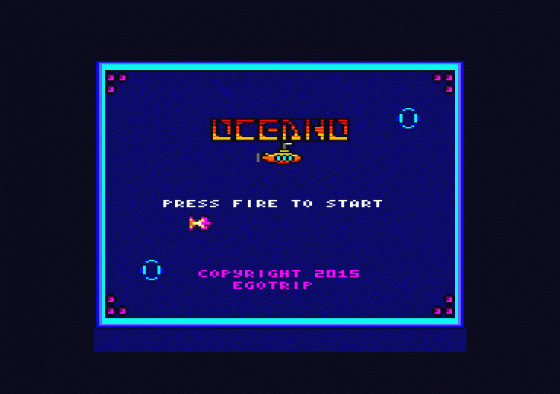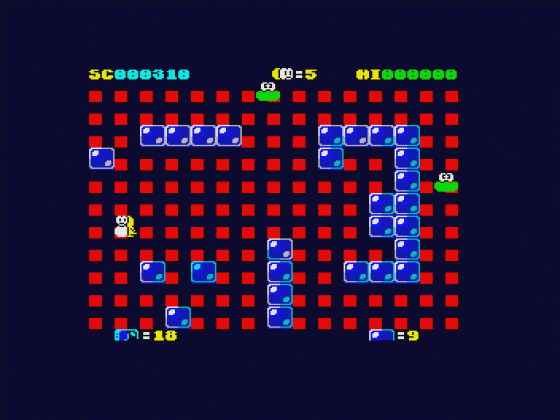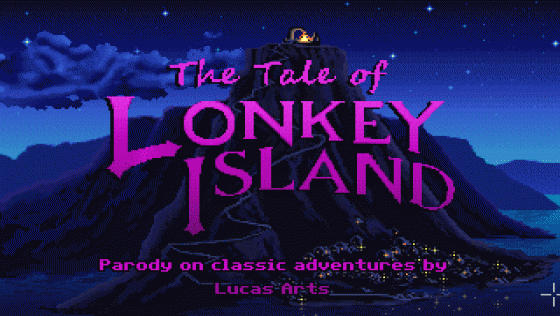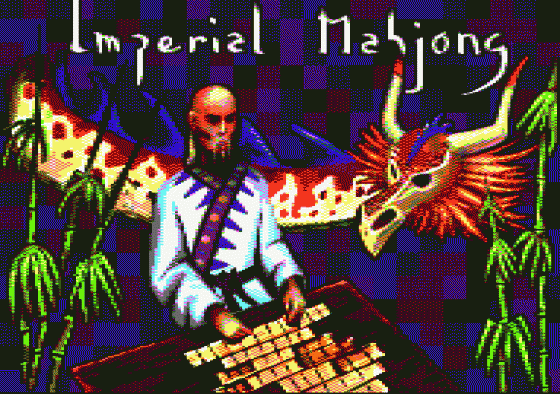
Micro Mart
 3rd November 2016
3rd November 2016
Welcome
I trust you have all noticed that Retro Round Up (which for the last 22 months has only featured in the Micro Mart 'Special' issues) now has a complementary weekly column called Retro Gaming News. Yes, like a river bursting its banks, those ever-increasing retro releases have flooded these four little pages and you can now look forward to at least one review of one piece of new software for the older machines in each individual Micro Mart issue.
That doesn't mean anything is changing in respect of the 'specials' however. They will retain the "big" Retro Round Up collection of reviews, but if you can't get enough of those retro releases then you can now get your fix every week without fail. You'll also remember that, in the last Retro Round Up, I announced I would be adding a facility to www.everygamegoing.com (and its Facebook page) to allow you to request reviews of any retro game I may have missed. This has not only been done, but I've also added 'Like' and 'Loathe' buttons to each of the pages too, meaning that, as all of you visit the site and add your votes, this page will update with your votes as to what games are considered the very best top ten game on every machine ever created.
So, without further ado, let's see what new retro games October 2016 has brought us...
Oceano (Ego-Trip, Amstrad CPC, Free)
Ego-Trip seems to have carved itself a rather niche little piece of the Amstrad market by producing extremely humble games in machine code. Its latest, Oceano, is a small, colourful, underwater collect-'em-up featuring a submarine on a quest to locate twenty "fabled power crystals". You won't have to venture far to find them either - some rooms even contain two of them!
There are a number of patrolling nasties of two types. The first is a robotic fish that swims back and forth getting in the way horizontally. The second is a bubble that floats up and down getting in the way vertically. The fishes can be blasted with the submarine's cannon whilst the bubbles must be avoided with your dexterous joystick-work.
It's tempting to summarise Oceano as a game you'll map out (in your head because it's so small), complete on your second go and, two days later, won't even remember. And, that being the case, you might wonder why you'd bother downloading it in the first place. The answer is that it's actually pretty relaxing to play something this mindless.

There is more challenge than that described above. Your cannon, for example, takes a while to recharge after each shot, so you need to be pretty confident that you're going to hit your mark before you taking it. Otherwise, you may find yourself on the wrong end of a pair of robotic fish jaws. And the caverns you're travelling through, whilst relatively forgiving, can be a little bit deceptive too. Yes, it may look like you can move your submarine down them but actually they are sometimes a few pixels too narrow, so you'll have to find a different way around instead.
You get a generous amount of lives and you'll only be killed off by your own mistakes, whilst graphics, music and sound are all pretty decent. It's genuinely surprising just how mellow this game makes you feel and, if you have a young child in the family that's just getting into computer gaming, this is an ideal game to practise with.
It's all classic flick-screen exploration and I did discover a small bug in that, in descending my submarine from one screen to another I suddenly found it had descended into the status bar at the bottom of the screen! Not that this bug seemed to cause a problem. I plodded around in there shooting at my own score before ascending out of it again...
Pengo Quest (Spectrum 48K, Gabriele Amore, Free)
In the early Eighties, there was an arcade game called Pengi which had its fair share of fans. In it, you played a cute penguin stranded in a maze of ice-cubes with quite a few hungry monsters. You had to skate around wiping out the monsters by pushing ice cubes at them. The format was done to death on 8-bit micros at the time, but, with Pengo Quest, Gabriele Amore has produced yet another new variation on the theme.
I have to say that, after playing his appalling conversion of Popeye (MM #1418), my hopes weren't very high and they certainly didn't rise when I found that Pengo Quest had no instructions other than a YouTube link explaining how to play the game.
Now with such a tried-and-tested game format, you might be tempted to skip watching that video. Do so and prepare yourself for a very short game indeed - because Pengo Quest is a variant with a difference that I would never have even considered. Here, the aim isn't to kill the monsters at all. Instead, the aim is to crush a certain number of ice cubes before time runs out. Race around simply killing all the monsters and you'll lose!
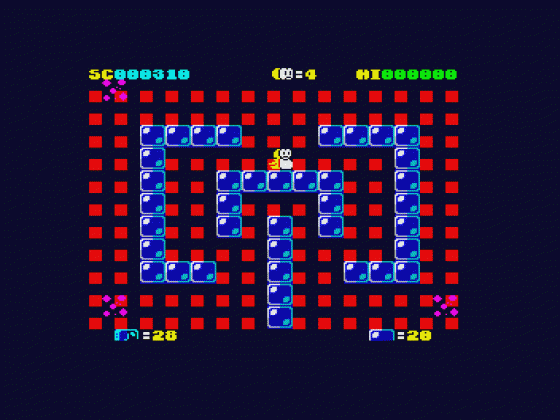
The first thing you find, after the intro has played and you've chosen your game controls, is that movement in the game is very jerky. All the sprites seem to move in large "leaps" of eight pixels (reminiscent of Boulder Dash) rather than smoothly. This does mean, however, that both you and the monsters will cover large distances extremely quickly. You can also attempt to crush the monsters if you wish by propelling ice cubes in their general direction and these similarly move at something close to light speed when pushed.
I found flinging the cubes about a fairly hit and miss affair (and more miss than hit!). In most games of this type, the monsters move like the hero does, i.e. in straight lines down the corridors of the ice-cube maze, randomly turning left and right when they are able. In Pengo Quest however, they bounce around like a Breakout ball, and it's difficult to predict where they will end up. There's not a lot of time to think about that either, because the countdown timer is particularly vicious.
The sprites are generally good - colourful without any colour clash - and fairly responsive. A new maze appears as soon as you manage to wipe out the previous one, and they get steadily tougher as levels progress.
Unfortunately, the standard of coding is more competent than professional - there's no music and the sound effects are pitiful. The jerky movement makes the game too difficult to be a lot of fun. The pressure to clear ice-cubes rather than fling them means dealing with the monsters is little more than an afterthought and you can be so busy racing around the screen that you inadvertently run straight into one of them.
I think there's a good reason why we've never before had a version of Pengi where crushing the monsters was optional. It's like making a version of Pac-Man where you don't have to eat all the dots! I much prefer the bouncing blocks and crushing of killer krackats from the Electron's Rubble Trouble to this race against the clock variant on the Speccy. Still, it's better than Popeye...!
The Tale Of Lonkey Island (PC (Windows), Cmdr, Free)
Yes, that's Lonkey Island, not Monkey Island, in this oddity from CMDR. Assuming everyone reading is well familiar with Lucasfilm's classic point-and-clicker, Lonkey Island bills itself as a parody of it, but plays more like a bizarre hack.
In fact, that's not an accurate description; in fact, a better analogy is to compare Lonkey Island to one of the Naked Gun/Airplane movies. You play Grisush Thriftweed who wishes to become Miele Island's chief firefighter. Finding your way to the AdventureGameStudio bar, you'll be set three trials: prove your courage, quench the burning desire of its patrons by providing grog and rescue a cat. The point and click format of the original is preserved, along with many of the collectable items and in-game characters but the puzzles are completely different. Every scene is also flipped horizontally, so every room appears as if you're looking at it in a mirror.
From the outset I should confess that I'm really not a fan of interfering with games in this sort of way. Attempting it with the original Monkey Island will be tantamount to messing with perfection as far as most retro-gamers are concerned. I'm sure I am not the only one who feels it's pretty lazy to take graphics and music wholesale from another game and then fashion them into something else.

Nevertheless, if the game was as hilariously funny as the original - or, indeed, even funnier! - then, as someone who has all the Monkey Islands on every format from the Amiga to the Xbox 360, I'd be the first to congratulate CMDR on wringing a new adventure out of the same elements.
However, I can't. First of all, it's not funny. By which I mean, from what I've seen of it so far, it's not even vaguely amusing. Switching an M for an L is hardly side-splitting stuff and, in the conversations you can have with the same characters - the chef, the pirates, Cannonball Head and the island lookout - they are not only stuck in the exact same locations as the original but say pretty much exactly the same things. (Grisush now says "f***" though because we all know swearing is hilarious.)
Forgive me, but I don't know what this is... but it isn't parody. I persevered with it, but it gave me a very uncomfortable feeling indeed. Something that doesn't help it one bit is that the English language version has been translated from German to English. So whilst the original text was laced with humour, even simple interactions in Lonkey Island are littered with the type of grammatical fluffs that occur when German is translated too literally to English.

In fact, it has only one saving grace. Its puzzles, and to some extent the narrative behind them, are good. For example, to complete your task to quench the pirates' thirst, you'll need to visit the chef's kitchen. In there, you'll find some experimental "just add water" instant grog cans. Water can be had from the sea outside the bar, but you'll also need a mug (handily perched next to the entrance) to mix it all up. Working this out is quite rewarding.
But I must quickly add that you won't get very far at all unless you've not only played the original but can actually remember how you solved the puzzles in it. For example, do you remember the seagull and herring "puzzle"? No? Well, then you'll likely be stumped as to how to "prove your courage" until you've revisted it.
As a stalwart Monkey Island fan, I really wanted to like this. If CMDR had kept the puzzles of this new game but instead brought back the original Guybrush Threepwood to return to the original Monkey Island and changed the backdrops and character graphics to reflect that a few years had passed, my instinct is that this would've worked much better. As it is, they seem to have created something which, whilst not completely nonsensical, is sadly going to have very limited appeal.
Imperial Mahjong (Amstrad CPC, Cargosoft, Free) - Retro Find Of The Month
Imperial Mahjong is a new game for the Amstrad from Cargosoft, who produced the mammoth point and click space adventure Orion Prime (MM #1350) seven years ago. As with that title, Cargosoft has set out to produce the very best version of Mahjong for the Amstrad CPC. And, whilst I don't have time to revisit every version of Mahjong already published on that machine, and it's actually rather difficult to define what constitutes a "great" version of Mahjong, I suspect they've come very close to achieving it. This game oozes quality from every pore.
If you're unfamiliar with Mahjong, here's my crash course in it. You get a board full of tiles, featuring pretty pictures, all arranged in a pattern with tiles stacked in layers. You can only match tiles if you they match identically, or they match "honourably", and you can only remove tiles that are on the edges of the pattern. This means with most tile patterns that you gradually work "inwards", removing the tiles around the edges. It's generally best to try and remove the tiles that are on the top layers first so that you can see the ones they are covering. Identical matches are pattern-matched with the eye; honourable matches have to be memorised.
Imperial Mahjong comes with a very clear manual introducing the nuances of the game. The game originates from China and, whenever you clear a board (by removing all the tiles), you are presented with some words of Chinese wisdom ("What the superior man seeks is in himself; what the small man seeks is in others"). But it's in the graphics and sound that this game really delivers.
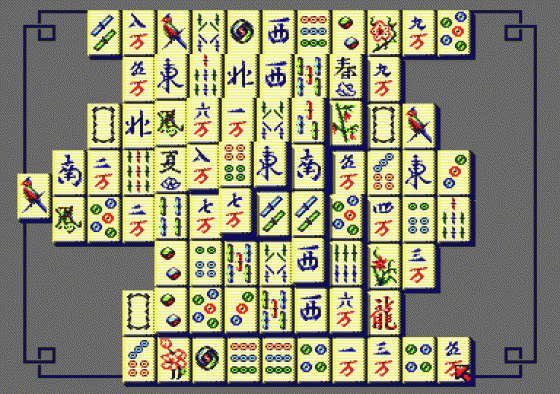
Firstly, there's a temptation with most 8-bit Mahjongs to use a low resolution two colour mode for the board display. That's because the tiles are quite distinctive enough to not require colour and using a low-res mode naturally frees up more of the very limited memory for computations. But this version uses the Amstrad's highest resolution mode with all eight colours and a rather nice "dithering" effect applied to the background which fools the eye into thinking it has even more.
The player glides a nicely distinguishable red arrow around the screen, selecting the pairs of tiles he wishes to remove. There's an appropriate confirmation noise when he does so, which sounds out slightly higher than the background music.
Now it's no exaggeration to say that Cargosoft has really gone to town with this background music. There are six different tunes to choose from and more than 30 minutes of music to listen to. It plays on eight octaves and wouldn't be out of place accompanying Robocop rather than a board game requiring a fair amount of concentration. Nevertheless, I didn't find it in any way distracting.

In fact, having played through countless versions of completely silent Mahjong games over the years, the music positively enhanced the experience. Because it loops, after ten minutes or so you are hearing the same bit again, but a quick press on the Escape key and you can change it.
That brings me nicely onto the menu, which is a small strip that appears in the very centre of the screen. By using just the left/right controls and Fire, you can configure practically any element of the game to your exact liking. You can set language, assess progress, switch boards, view an in-game resume of how to play and even "seed" your own game to challenge a friend. It also doubles as a pause functionality too.
As for the games of Mahjong themselves, they are as perplexing and challenging as you might expect. Personally, I really have no idea if I use skill or just blind luck to win at Mahjong. I often find myself stuck looking for a match or trying to work out exactly how to get a tile which is obstructing a lot of others removed from the board. Often I find I need to work backwards (i.e. "Well, I can't remove that one unless that other one is gone first, and I can only remove that other one if I first get rid of that pair...!") On many occasions there's a sudden realisation that the game is going to play out or, more often than not, that play is going to be impossible after a few more moves. When this happens, it's testament to the true addictiveness of the game that you'll probably hit the Escape key, hit the "Again" icon and try a second, third or fourth time rather than reach for reset.

A nice touch is that the board on which the tiles rest features a very attractive Chinese dragon, who is slowly uncovered as you make progress.
There is one glaring omission to Imperial Mahjong and that is that it's not possible to "undo" even a single move. This is important because you sometimes have a choice of which tile to match with. Your eye may not notice one of them until it's too late. Some versions of the game even allow "undo"s all the way back to the very start. Personally, I didn't miss this feature. I just noticed that it wasn't there.
Another important note is that you have to hold down Space on the title screen to get the game to start.
As far as newly published Amstrad games go, this is easily the best one I've seen this year. It comes on disc only and requires a 128K machine, although if you're playing it via emulation (as most of you will be) then WinApe will load it up with no problems whatsoever.
That's All Folks!
Quite a mixed bag of retro goodness this issue and, with the launch of Sinclair's new Vega Plus just around the corner, it will certainly be interesting to see just what Retro Computers has learned from the flaws in the Sinclair Vega, which you may remember I mentioned extensively last year. See you next week in the Retro Gaming News section.
Scores
(Amstrad CPC464)
(Amstrad CPC464)
(Spectrum 48K)
(PC (Windows))

